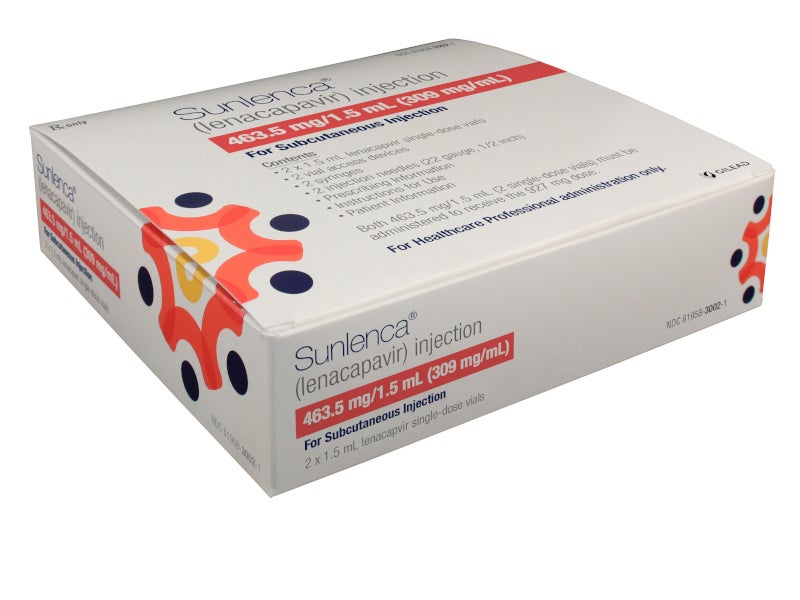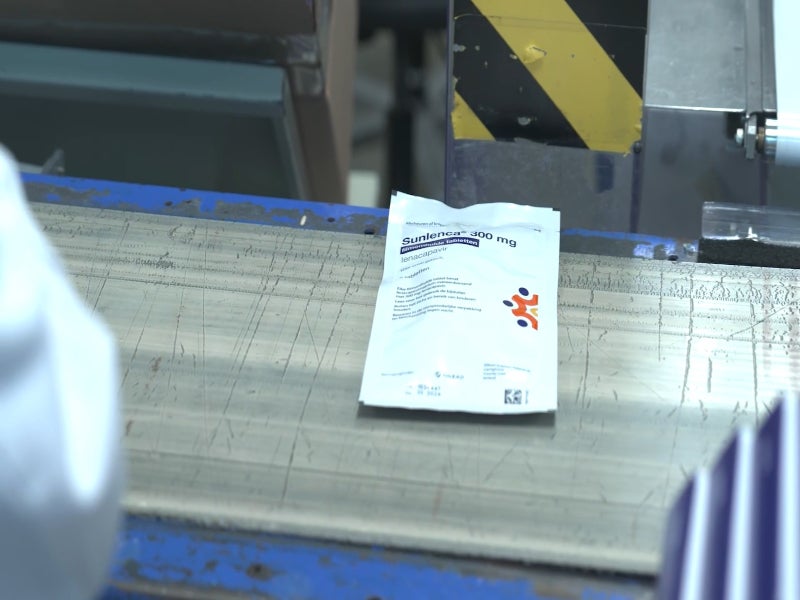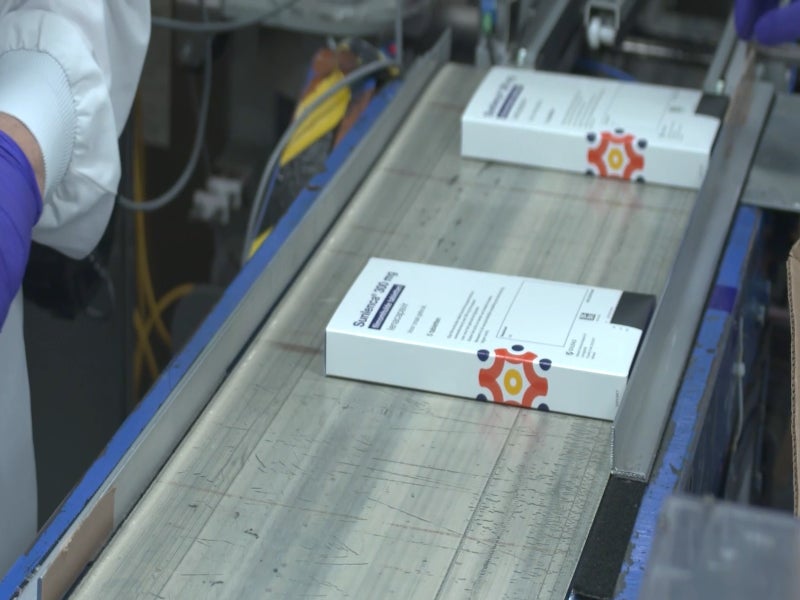Sunlenca® (lenacapavir) is a first-in-class capsid inhibitor indicated for the treatment of adults with multi-drug resistant human immunodeficiency virus-1 (HIV-1) infection, for whom the construction of any other suppressive anti-viral regimen is not possible.
Developed by US-based biopharmaceutical company Gilead Sciences, Sunlenca is the only approved twice-yearly HIV-1 treatment option. It is available as a 300mg capsule-shaped, film-coated tablet in beige colour, as well as a clear and yellow injectable solution in a single-dose vial. Each vial contains 463.5mg/1.5mL (309mg/mL) of lenacapavir.
Details of Sunlenca’s dosing schedule
For the first two days of treatment, the recommended dose of lenacapavir is 600mg a day taken orally (2 x 300mg tablets). On the eighth day, the recommended dose is 300mg taken orally (1 x 300mg tablet). Then, on the 15th day, the recommended dose is 927mg administered by subcutaneous injection (a total of two 1.5mL injections).
The recommended maintenance dose is 927mg of Sunlenca administered by subcutaneous injection once every six months (26 weeks) from the date of the last injection (+/- two weeks).
Regulatory approval for Sunlenca
Gilead Sciences submitted a new drug application (NDA) for lenacapavir for the condition to the US Food and Drug Administration (FDA) in June 2021.
In December 2021, the FDA placed a clinical hold on the drug’s clinical studies for HIV treatment and HIV pre-exposure prophylaxis due to concerns over the quality of their borosilicate vials. It issued a complete response letter (CRL) for the NDA, citing issues related to the compatibility of the vial and lenacapavir, in March 2022.
In May 2022, the clinical hold was lifted after the FDA reviewed Gilead’s detailed approach and supporting data on the storage and compatibility of lenacapavir injection using an alternative vial made of aluminosilicate glass. Gilead resubmitted the NDA for the drug, addressing the issues related to vial compatibility in June 2022. The FDA accepted the NDA for review in July 2022 and approved the drug in December that year.
The European Medicines Agency (EMA) validated the drug in August 2021, while the European Commission (EC) approved the drug for marketing in August 2022.
Sunlenca’s mechanism of action
Lenacapavir is a multistage, selective inhibitor of HIV-1 capsid function that directly binds to the interface between capsid protein subunits. It is a long-acting medicine and is used in combination with other antiretroviral medicines to treat HIV-1, the virus that causes acquired immunodeficiency syndrome (AIDS).
The drug is used to treat HIV infection in adults with limited treatment options; for example, in cases when other antiretroviral medicines are not sufficiently effective or are not suitable.
HIV and AIDS causes and symptoms
HIV is a virus that attacks cells that help the body fight infection, making a person more vulnerable to other infections and diseases. It is spread by contact with certain bodily fluids of a person with HIV, most commonly during unprotected sex, or through the sharing of injection drug equipment. HIV can cause cases of AIDS if left untreated.
AIDS is the late stage of HIV infection that occurs when the body’s immune system is badly damaged because of the virus. A person with HIV is considered to have progressed to AIDS when the number of their CD4 cells falls below 200 cells per cubic millimetre of blood (200 cells/mm3), compared to between 500 and 1,600 cells/mm3 in a person with a healthy immune system, or if they develop one or more opportunistic infections regardless of their CD4 count.
Without HIV medicine, people with AIDS typically survive about three years. Life expectancy without treatment falls to about one year, once someone has a dangerous opportunistic illness. HIV medicine can still help people at this stage of HIV infection, and it can even be lifesaving.
Clinical trials on Sunlenca
The approval of Sunlenca was based on data from the Phase Ⅱ/Ⅲ CAPELLA clinical trial. This was a global, multi-centre, double-blinded, placebo-controlled trial that evaluated lenacapavir in combination with an optimised background regimen (OBR) in heavily-treated patients living with multi-drug resistant HIV-1 infection.
The study’s primary endpoint was to evaluate the antiviral activity of lenacapavir, which was administered as an add-on to the failing functional monotherapy in patients.
When administered subcutaneously every six months in combination with other antiretrovirals, the drug achieved high rates of virologic suppression and clinically meaningful increases in patients’ CD4 lymphocyte counts.
In the multi-drug-resistant HIV patient population, 83% of patients receiving lenacapavir in combination with an OBR achieved an undetectable viral load (˂50 copies/ml) at week 52. The patients also achieved a mean increase of 83 cells/l in CD4 count.
The most frequent adverse reactions reported in patients during the clinical trial were injection site reactions, which were typically mild or moderate in severity, as well as nausea, diarrhoea, and Covid-19.




